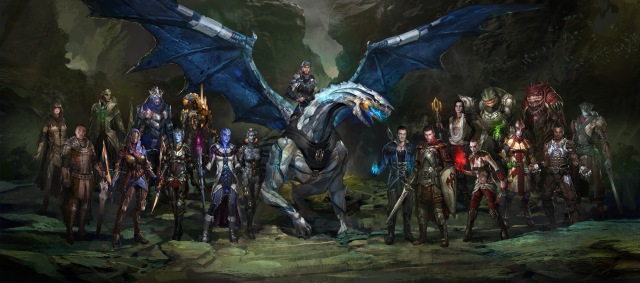To continue the theme from my last post How to Create Supporting Characters.
Supporting characters are essential in moving the plot and expanding the protagonist to a three-dimensional character but creating a large cast of characters can be extremely hard.
Large casts are quite common and difficult. Once you start factoring in each character’s personal contribution to plot and theme it can be confusing.
So here are five rules for writing a large cast of characters.
1. Characters Should Exist to Represent Theme and Move Plot
The first and single most important principle to consider when evaluating the size of your cast is this: does each character matter to this story?
Characters that receive spotlight should never be a throwaway. Each must contribute to the story. Sometimes this contribution may necessarily be as small as a few catalytic or informational lines in a one-off scene. But the more screen-time characters have, the greater your responsibility to make sure they contribute to the story on a larger scale.
It’s not enough for prominent characters to exist in the story merely to move the plot; they also must influence and impact the protagonist’s personal arc of growth.
2. Fewer Characters Are Better
By extension of the above, here’s a truth some authors don’t like to face: fewer characters really are better. The tighter your cast, the tighter your story’s focus—in both its presentation of a forceful plot and reader engagement.
On a practical level, small casts aren’t always possible. For example, you can’t tell an epic story about multiple kingdoms at war without a cast of hundreds or even, technically, thousands. In these cases, you will need a substantive cast simply to convey the weight of the story’s events.
Ask yourself: what is the fewest number of primary characters necessary to tell this story? Any more than that and you risk clutter.
3. Identify Which Characters Play a Role in the Climax—and Prioritize Them
Another way to determine whether your large cast is justified is by following all of your characters to the end of the story. What is their role in the climax?
As the ultimate payoff of all foreshadowing in your story, the climax dictates what elements deserve a place in the previous acts.
Characters who have no role in or impact upon the final climactic encounters are probably characters who are probably not necessary to your story.
On the other hand, those characters who do play into the climax, these are the characters who matter to your story.
As such, they need to be properly developed throughout the story—preferably in all three acts. Even in situations where you’re unable to give these characters a lot of screentime throughout, they should at least make an appearance and/or a sizable contribution in each act.
4. Decide Your Protagonist
The larger your cast, the more important it is to ground your story with a solid protagonist. This is the character with whom your readers will relate; this is the lighthouse in the storm. More than that, the protagonist is the character who ultimately defines both the main conflict and the theme.
If you’re uncertain which character is your protagonist, look again to the climactic Moment. The protagonist is the character who initiates and/or is most strongly impacted by the final resolution of the conflict and/or represents the final thematic outcome.
5. Know Your Characters Motives and Stakes in Each Scene
If your cast of characters aren’t there to do something, then they’re just in the way.
Characters are no good to you if they aren’t contributing to the plot in every scene they are present.
If you discover a particular character really doesn’t have anything to add to a scene’s conflict and progression, it could be that character isn’t necessary to the scene or story.
Stories with large casts of characters offer many challenges. Even the simplest story requires dozens of complex working parts; the more characters you add, the more you exponentially increase your own challenges.
However, when done well, large casts bring depth and heft to your story.
Do you like to feature large casts of characters in your stories? Why or why not?
Please post your comments and answers below. If you think someone has an interesting point of view and answer, please invite them or share this post with them.
#DWTSmith #epicfantasy

Really helpful advice in this post. Thanks for sharing your thoughts on large casts. x
LikeLiked by 1 person
Thank you and I’m glad you enjoy my posts and advice 😃
LikeLiked by 1 person
I’m not a fan of large casts. More often than not, they are excessive and unnecessary, usually because the book itself is too long and could be cut down by a quarter or more.
LikeLiked by 1 person
For me it depends on the story, if characters are being added later on in the series or novel, it jerks me out of it.
LikeLiked by 2 people
Helpful advice, thanks 🙂
LikeLiked by 1 person
Thank you 😃
LikeLiked by 1 person